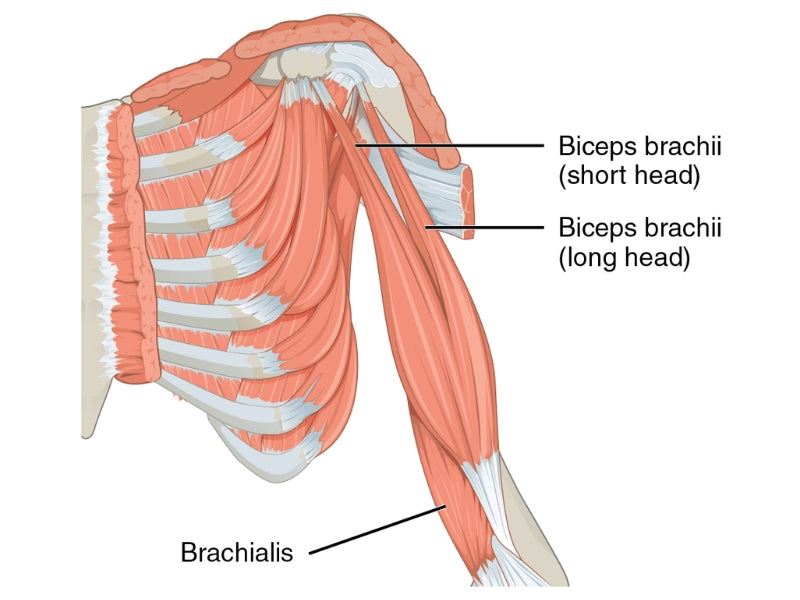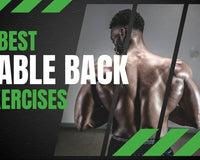If you're trying to grow bigger biceps, then curls are going to be one of the exercises you will want to be doing.
That said, there are many different types of dumbbell curls to choose from helping you add variety and keep your biceps growing.
Two main types of dumbbell curls include the standing dumbbell curl and the incline dumbbell curl.
While both are very useful and have benefits in their own rights, they're quite different, and which one you do depends on what your overall goals are.
Let's compare the standing curl and the incline curl.
The Standing Curl

First, we have the standing curl, which is a curl that you perform while you are standing upright without any support.
Here, you have a dumbbell in each hand with your arms by your side and your palms facing inwards.
You're going to bend at the elbow and lift the dumbbell up to your shoulder, making sure that you rotate your forearm so that your palm ends up facing your shoulder.
You're going to return to the starting position and then repeat this on the other side.
A variation of this, some people lift both dumbbells at the same time, which is perfectly acceptable as long as you maintain proper form, which means keeping your shoulders still and your core engaged.
Incline Curl

We then have the incline curl, which is performed on an incline bench. Here, you lay down on an inclined bench with your body at roughly 45° to 60° angle. Your arms hang down by your sides and you then try to curl the dumbbell.
This means that you first need to set up the incline bench so that the backrest is anywhere between a 45° and a 60° angle.
With your feet firmly on the ground, allow your hands to hang downward so that your palms face inwards.
Raise a dumbbell upwards and make sure to rotate your forearms so that your palm faces your shoulder at the top of the lift.
You can then repeat this motion on the other side, or opt to do both at once..
Related Post: Pronated Vs Supinated Grip - Know the Difference
Differences Between Standing and Incline Curls
There are a few essential differences between standing curls and incline curls that you need to know about in order to make the right choice.
These differences include the range of motion, muscle activation, and the amount of weight you feel like you are lifting or can lift.
The Range of Motion
One of the biggest differences between these two types of dumbbell curls is that the incline curl has a much greater range of motion.
When you are standing up, your arms are relatively in line with the rest of your body, which means that although there is a decent range of motion, it's not maximal.
On the other hand, if you are doing an incline curl, it means that your arms are actually hanging or positioned behind your body at the beginning of the exercise.
This means that with the incline curl, there is more distance for the dumbbell to travel, therefore featuring a greater range of motion than a standing curl.
Related Post: 9 Dumbbell Forearm Exercises
Overall Muscle Activation

The range of motion really does make a huge difference here, because it determines the muscles that get activated when you do curls.
To understand muscle activation and biceps curls, you need to understand a bit of biceps anatomy.
What you need to know here is that there are three flexor muscles, the biceps brachii, the brachialis, and the brachioradialis.
For the record, the biceps brachii is the muscle closest to the surface, the one that is the most visible.
Important to note is that when you do a standing biceps curl, it activates all three muscles in a relatively even manner.
This means that a standing curl is a great way to build some all around strength and size in your arms.
However, the incline curl puts much greater pressure on the biceps brachii, which is due to its extended range of motion.
Although the brachialis and the brachial radialis are still required for the incline curl, they're used much less than the biceps brachii (long head).
On the other hand, the incline curl only activates your anterior deltoids and wrist flexors as stabilizers, whereas the standing curl activates both of these groups, but also your middle and upper trapezia, as well as your scapula.
So, although the incline curl activates your biceps brachii much more, the standing version is more rounded.
Weight

The other difference worth noting here is that with an incline curl, you generally lift less weight than with a standing curl.
Standing curls feature a shorter range of motion and a slightly more natural position, therefore allowing you to lift a bit more weight than with incline curls.
Related Post: 8 Dumbbell Bicep Exercises Worth Trying
What Type of Curl is Best for You?
At the end of the day, both of these curl types are great to do. With that being said, if you are going for maximum muscle size and aesthetic appeal, then you'll want to do incline curls that target your biceps. However, if you're going for a more well-rounded approach, then standing biceps curls are great.





